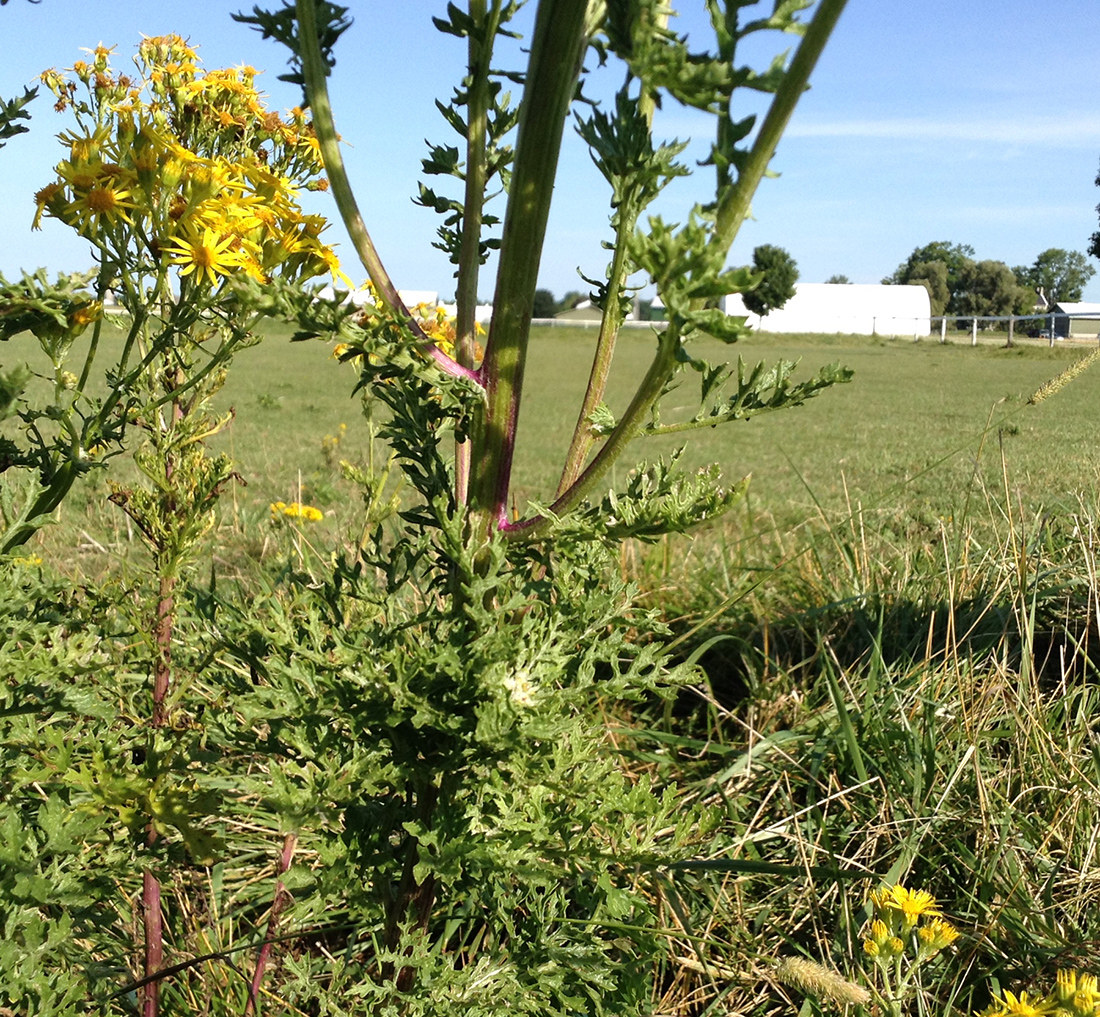Tansy Ragwort
Poisonous to livestock when consumed.
- Composite or aster (Asteraceae family):
- Jacobaea vulgaris Gaertn.
- EPPO code:
- SENJA
- Other names:
- Stinking willie
Species information
- Lifecycle:
- Biennial or short lived perennial.
- Propagation:
- Tansy ragwort reproduces by seed and laterally spreading secondary roots.
- Emergence:
- Most seedlings emerge from early spring to early summer.
- Habitat:
- Tansy ragwort is found predominantly in pastures and waste areas in localized areas throughout Southern Ontario.
- Toxicity:
- Tansy is poisonous to livestock and can cause liver damage. Symptoms that may occur after plant consumption include: weakness, high temperature, incoordination and yellow mucous membranes. Currently, there is no known antidote for this alkaloid-based toxin (Lawlis, 1998).
Identification clues
Leaves
- Cotyledons:
- Round.
- Young leaves:
- The first seedling leaves of tansy ragwort are round with entire to wavy margins, but subsequent leaves are more finely divided.
- Mature leaves:
- Mature leaves grow in a basal rosette ranging from wavy margined to finely divided leaves that somewhat resemble the leaves of kale. Stem leaves are alternate and finely divided.
Mature plant
- Stem:
- Tansy ragwort’s stem is erect and covered in cobweb like hairs. The plant grows as tall as 1 m.
- Flowers:
- Tansy ragwort produces clusters of yellow flower heads with an orange center (disk florets). The center is surrounded by several thin, yellow ray florets (similar to petals) that are pointed to round at the tip.
- Root:
- This species produces a short taproot with many lateral secondary roots that can propagate new plants.
Often mistaken for
I know it's not Tansy because the leaves of tansy ragwort do not have an odour reminiscent of mentholated ointment (for example, Vick’s VapoRub) and the flower heads of tansy do not have petal-like ray florets.





Updated: January 13, 2023
Published: January 13, 2023